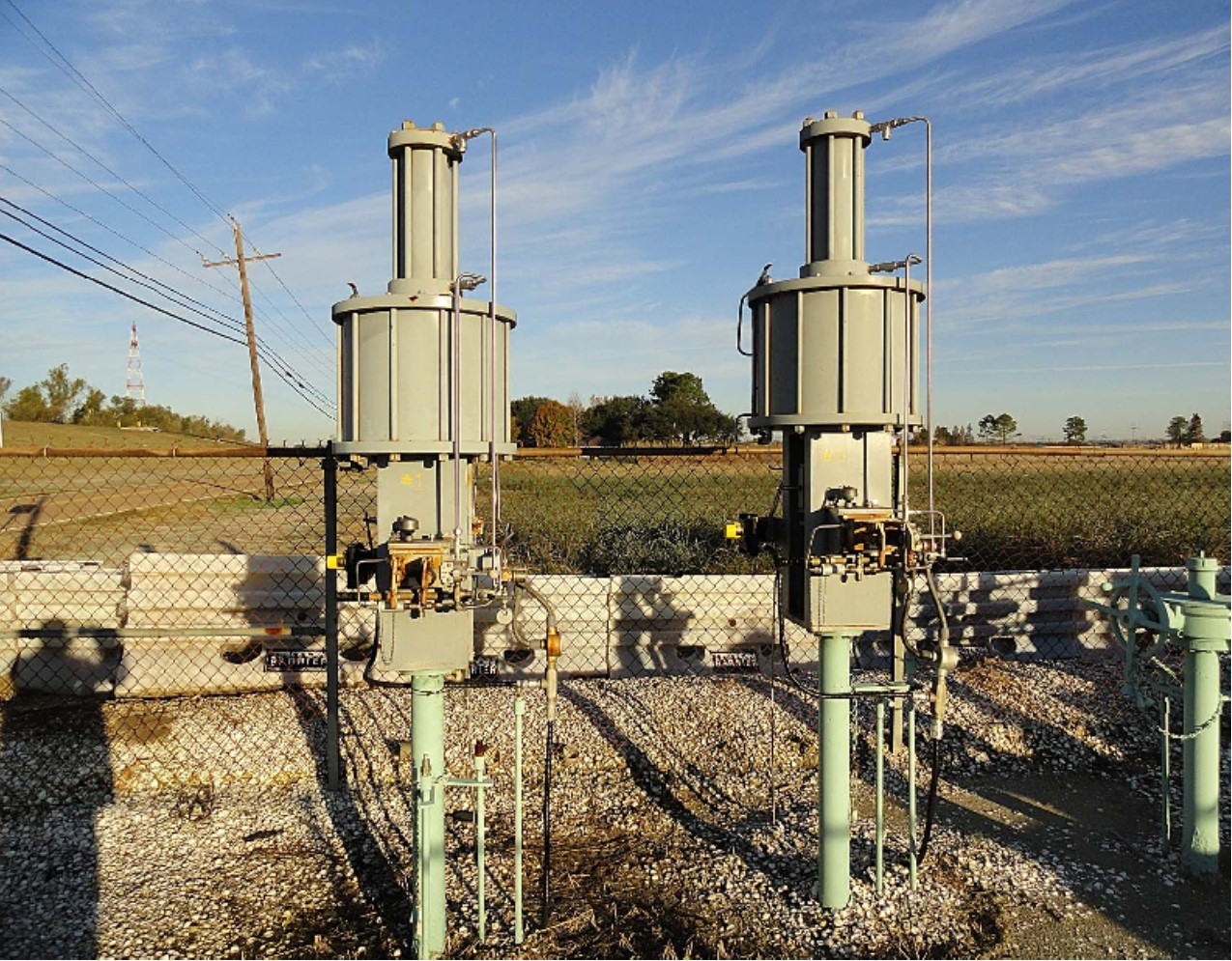Many valve industry professionals already know about operating globe valves with linear actuators. But many aren’t aware that a gate valve with a rising stem can also be operated by a linear actuator.
Historically speaking, gate valve operations have been automated with multi-turn electric actuators. However, the preferred choice may be linear actuators with applications now requiring higher thrust, more precise positioning, faster stroke speed, or a specific failure safety position of the valve.
What types of linear actuators are there?
Technically, any device which generates linear motion may be a linear actuator. The primary advantage of which is that many applications require linear motion including dampers and valves.
A linear actuator simplest design is a piston moving within a cylinder. And this configuration has only one moving part.
For more precise control over a piston’s movement, you want a linear hydraulic actuator because liquids are virtually incompressible. The hydraulic fluid gets pumped in a cylinder which pushes the piston forward and then the fluid is removed to pull the piston back.
Similar in principle to the hydraulic actuators is the pneumatic linear actuator. With the exception that pneumatic actuators are powered by compressed air rather than hydraulic fluid. This results in less precise movements because air is compressible.
A drawback is: if you’re moving a large amount of weight, you generally do not want to use a pneumatic linear actuator. A benefit is that compressed air is more readily available in most industrial environments.
What are gate valves?
A gate valve opens by lifting a gate or barrier out of the fluid’s path. To increase the pressure against the sealing surface, gate faces are usually wedge-shaped.
The benefit of a gate valve over other valve designs is that there is virtually no resistance to flow when the gate is completely open. Another benefit is gate valves take up very little room along a pipe’s axis.
However, a drawback of the gate valve design is that they become more difficult to operate at high pressure. This is because fluid pressure pushes against the valve’s guiding rail. For this reason, large gate valves may need a bypass controller, which will help to reduce fluid pressure on the gate before the gate valve operates.
If minor leaking isn’t a critical issue for an application, then your gate valves can be used without an additional sealing ring on the seat or gate. This typically works in sewer or heating pipes.
Why Linear Actuators are considered for Automating Gate Valves
The adaptability of hydraulic and pneumatic linear actuators has been proven in many applications outside the valve industry.
These actuators are ideal for tight piping runs because of their compact profile. Linear actuators have a simple yet robust design making them reliable under a range of operating conditions.
If you are looking for an effective solution for gate valves with rising stems, linear actuators are the ideal choice.
Get a same-day quote from an ATI specialist within 24 hours or less!
FAQ about Linear Actuators:
1. Is a linear actuator better than a pneumatic actuator?
Well, it largely depends on the application that the actuator needs to be used for. While electric linear actuators are ideal when there is a need for precise and clean movements, pneumatic actuators fit the bill when it comes to ensuring affordability and low maintenance.
2 . What are linear actuators used for?
More often than not, linear actuators are used for actions that need force such as lifting, pulling, pushing, or tilting. This makes electric linear actuators ideal for industrial machinery, valves, dampers, disk drives, printers, and other applications which need linear motion.
3. What is the capacity of a linear actuator?
The capacity of a linear actuator basically refers to its ability to lift or push something. Of course, the capacity of the actuator may vary from model to model. However, depending on the application a linear actuator can push anywhere between 15 to 2,000 pounds. In case of specific heavy-duty needs, actuators can be custom-made to enhance their capacity even further.
4 . Are linear actuators reliable?
As far as accuracy is concerned, linear actuators are the most reliable, followed by mechanical actuators. Hydraulic and pneumatic actuators, on the other hand, fair comparatively poorly on the accuracy scale.

